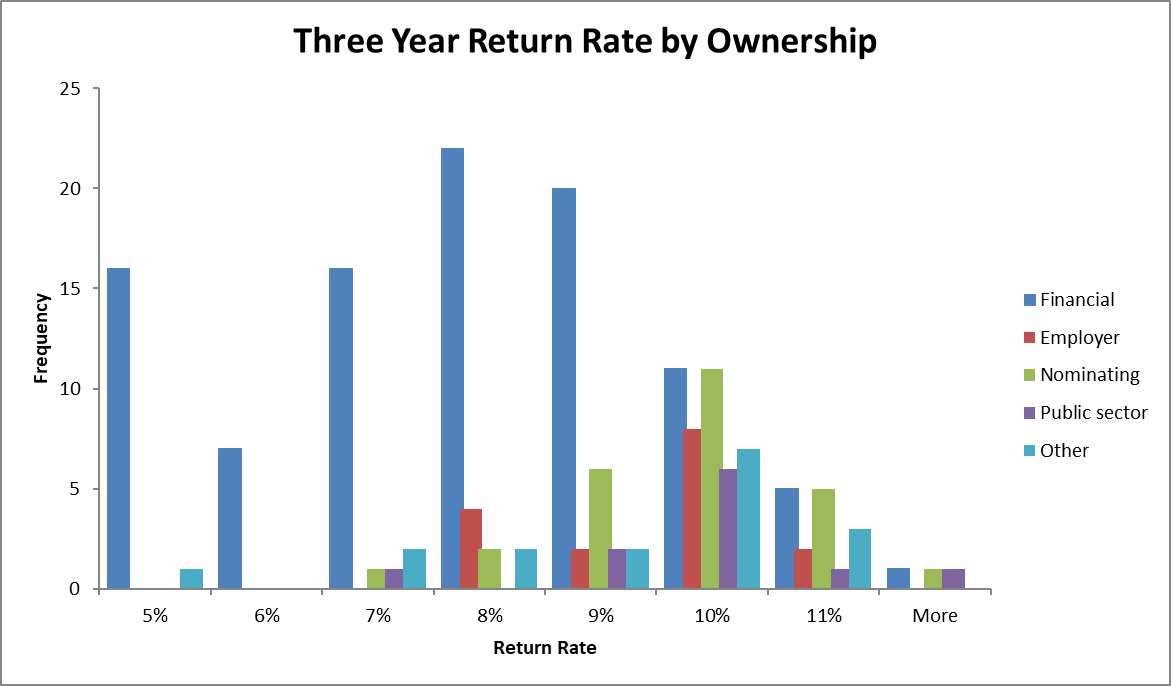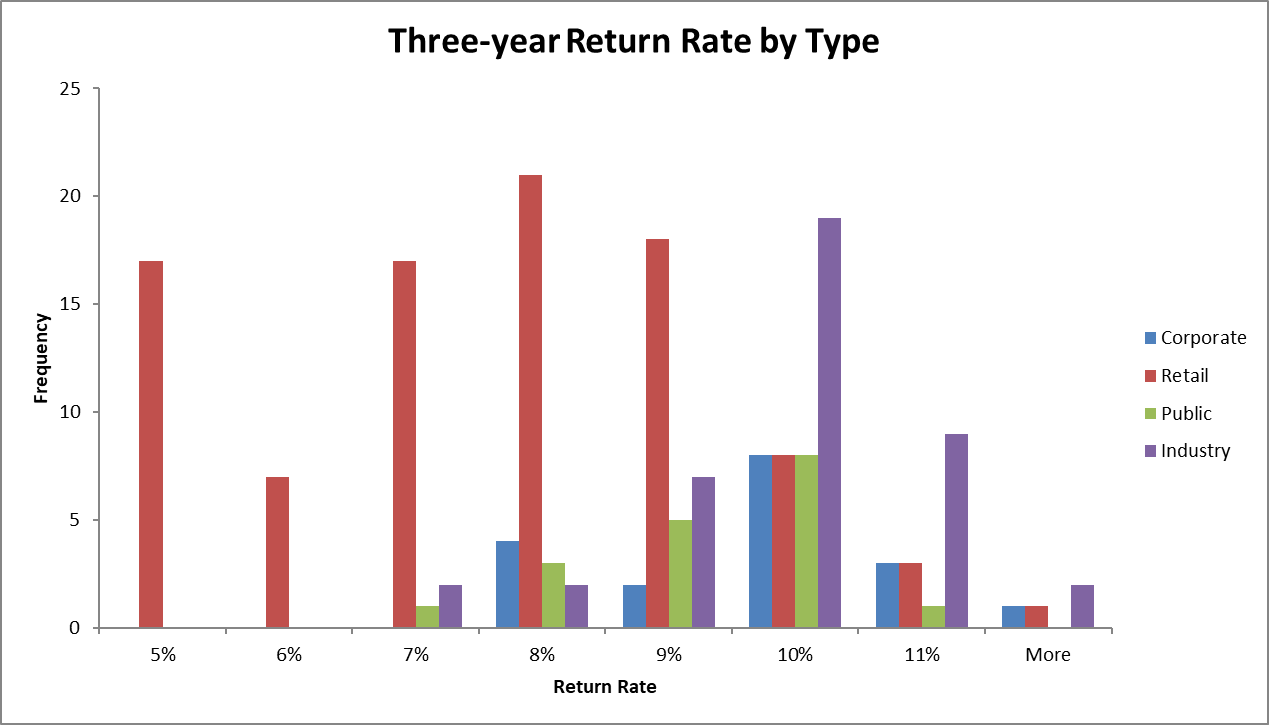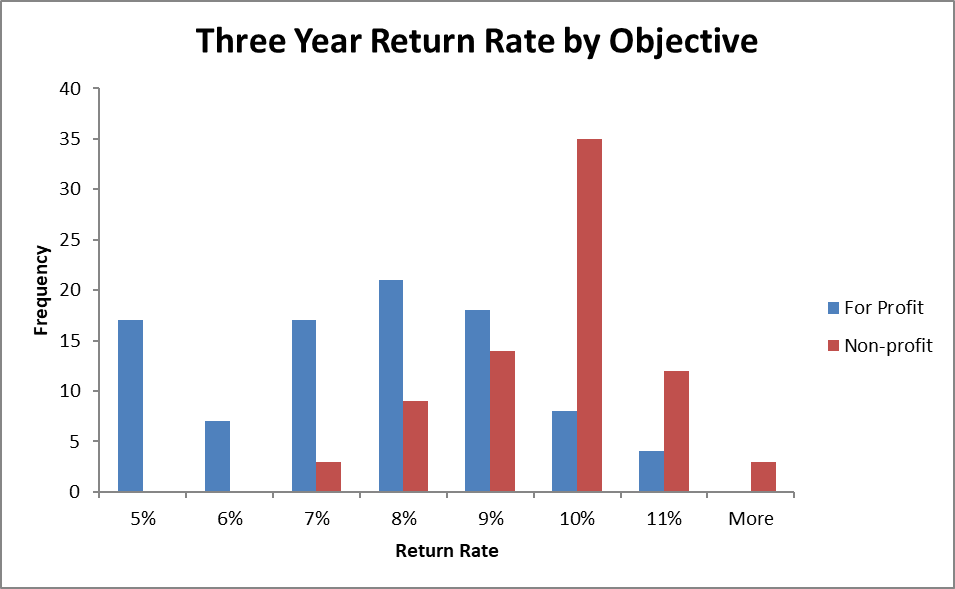Abstract
The present report aims at providing general recommendations for investors about selecting an optimal superannuation fund. The report uses statistical methods to analyse a dataset provided by the productivity commission. Descriptive statistics and visualisations using histograms revealed that three-year return rates of superannuation funds might differ depending on their ownership structure, type and profit status. Hypothesis testing revealed two misconceptions about the return rates and operational costs of for-profit and non-profit funds. Additionally, the report confirmed the statistical significance of the effect of fund type on one-year and three-year return rates. Finally, the regulatory type of superannuation funds was found to have an inconsistent effect on their profitability. The report also outlines the implications of the major findings.
Business Problem
Superannuation funds are a common investment choice for people thinking about their retirement. Different types of funds provide different return rates depending on a wide variety of factors. Thus, people thinking about their retirement find it difficult to select the most appropriate funds to maximise their benefits. The present report aims at providing general guidelines for clients to select the most profitable superannuation funds based on their characteristics. In particular, the present report will take into consideration the ownership structure, the type of fund, and profit status and their effect on the expense and the return ratios.
Statistical Problem
The business problem will be addressed based on the analysis of the dataset provided by the productivity commission. The dataset includes information on 11 variables based on a sample of 168 superannuation funds. The present report aims at answering the question if the ownership structure, the type of fund, and the profit status of superannuation funds have a statistically significant effect on the performance variables. In particular, the report analyses if the mean return rates and expense ratios of superannuation funds with different characteristics are significantly different depending on their characteristics. Statistical methods, including descriptive statistics, histograms, independent sample t-tests, and ANOVA, were used to resolve the statistical problems.
Analysis
Distribution Analyses
Ownership Structure
The first question was if the ownership structure affected the return rates of the superannuation funds. A histogram with multiple datasets was created to evaluate the distribution of return rates based on the ownership structure of the fund. Even though the dataset represents one-year, three-year, and five-year return rates, it was decided to use three-year return rates for analysis to avoid information overload. The histogram is presented in Figure 1 below.

According to the histogram, the distribution of three-year return rates of financial superannuation funds is close to a symmetrical normal distribution with the median value around 8%. Employer, nominating, and public superannuation funds also have approximately symmetrical distribution around the return rate of 10%. However, the three-year return rate distribution curve other superannuation funds differ considerably, as it is negatively skewed with the median value around 10%. In short, the observations of the histogram reveal that the distribution of three-year return rates differs depending on the ownership type of the regulation fund.
Descriptive statistics were used to quantify the distribution of three-year return rates for funds with different ownership statuses. The descriptive statistics is demonstrated in Table 1 below.
Table 1: Descriptive statistics: Three-year return rates by ownership status
The analysis of descriptive statistics demonstrates that the mean values of three-year return rates differ at a certain degree. Employer, nominating, and public sector superannuation funds have approximately similar mean values between 9.1% and 9.4%. Mean values for these types of superannuation funds are close to their median values. At the same time, their variability coefficients are also comparable and rather low. The mean and median values of three-year return rates for financial superannuation funds are also comparable; however, they are lower than the mean and median values for the employer, nominating, and public sector funds. At the same time, financial superannuation funds have the highest coefficient of variation (35.38%), which makes them unreliable. Finally, other superannuation funds have a mean value (8.474%) different from the median (9.501%) together with a high coefficient of variation (27.02%).
Type of Fund
The second question was if the type of fund had a considerable impact on the return rate. The three-year return rate was used to complete the analysis. Similarly, to the first question, a histogram with multiple datasets was created to analyse the shape of the distribution. The histogram is presented in Figure 2 below.

According to Figure 2, retail funds are the most frequent superannuation funds included in the dataset. The distribution of three-year return rates of retail funds is close to the symmetrical normal distribution curve with a median value of around 8%. Second in frequency are the industry funds, which have a median value of around 10% and symmetrical normal distribution along the three-year return rate axis. The return rates’ distributions of corporate and public funds also close to a symmetrical normal distribution curve.
Table 2 below provides descriptive statistics of the return rate distribution by fund type. The analysis of descriptive statistics reveals that corporate, public, and industry types of funds have comparable mean and median values (between 8.9% and 9.6%). At the same time, the variability of these three types of funds is comparatively low (between 11% and 14%). However, descriptive statistics revealed that retail funds seem to have lower mean and median return rates. At the same time, the variation coefficient is very high (36.66%), which implies that investing in these funds may be associated with inconsistent returns.
Table 2: Descriptive statistics: Three-year return rates by fund type
Profit Status
The third question was whether the profit status (objective) had an influence on the return rate of superannuation funds. Similar to previous analyses, a histogram with two datasets was created to compare the distribution pattern of three-year return rates based on the profit status. The histogram is provided in Figure 3 below.

The analysis of the histogram demonstrates that return-rates of for-profit funds follow a symmetrical normal distribution pattern with a median value of around 8%. The distribution curve of non-profit funds also resembles a symmetrical normal distribution pattern. However, the median value appears to be higher (10%).
Descriptive statistics presented in Table 3 below demonstrates that the mean return rate for non-profit funds is 9.3%, which is close to the median value of 9.5%. The variation coefficient of these funds is low (12.3%). For-profit funds have a mean three-year return rate of 6.8%, which is comparable to the median value of 7.3%. The coefficient of variation is high (36.65%), which implies that these types of superannuation funds are inconsistent in their return rates.
Table 3: Descriptive statistics: Three-year return rates by objective
Hypotheses Testing
For-profit vs Non-profit Return Rates
Many investors believe that, in general, for-profit funds have a higher return rate than non-profit funds. Thus, a null hypothesis and a hypothesis need to be formulated to perform a two-sample t-test with unequal variances.
- H0: µ1 – µ2 = 0.
- HA: µ1 – µ2 > 0.
Where:
- µ1: mean of for-profit funds’ return rates;
- µ2: mean of non-profit funds’ return rates.
Three sets of t-test were run using data on one-year, three-year, and five-year returns. The results are presented in Table 4 below. The results of t-test revealed that the null hypotheses could not be rejected in any of the three tests at a 5% significance level. This implies that the assumption that for-profit funds have higher return rates is wrongful.
Table 4: T-test results: Comparison of return rates by objective
For-profit vs Non-profit Expense Ratios
Many investors believe that the expense ratios of non-profit funds are lower than the expense ratios of for-profit funds. A t-test needed to be performed to compare the means of two samples with unequal variances. The hypotheses were:
- H0: µ2 – µ1 = 0.
- HA: µ2 – µ1 < 0.
Where:
- µ1: mean of for-profit funds’ expense ratios;
- µ2: mean of non-profit funds’ expense ratios.
The test results revealed that the null hypothesis could not be rejected (t=-0.32; p-value=0.627). This implies that there is no statistical evidence to claim that the mean of expense ratios of non-profit funds (Mean=1.05%; SD=2%) is lower than the mean of the expense ratios of for-profit funds (Mean=1.37%; SD=8.47%).
Effect of Fund Type on Rates of Return
It is unclear if the type of fund (corporate, retail, public, and industry) has a significant effect on the return rates. In order to understand if there was a significant difference between the mean return rates of different types of funds, three one-way ANOVA tests were conducted using one-year, three-year, and five-year return rates. The hypotheses were:
Where:
- µ1: mean of corporate return rates;
- µ2: mean of retail return rates;
- µ3: mean of public return rates;
- µ4: mean of industry return rates.
The results of the first test revealed that there was a significant effect of the fund type on one-year return rates at 0.05 significance level (F(3,164) = 5.11, p = 0.002). The results of the second test revealed that there was a significant effect of the fund type on three-year return rates at 0.05 significance level (F(3,164) = 24.18, p < 0.001). The results of the third test revealed that there was a significant effect of the fund type on three-year return rates at 0.05 significance level (F(3,164) = 23.44, p < 0.001). Thus, it can be concluded that different types of funds have different return rates.
Effect of Regulatory Type on Return Rates
Many investors believe that returns on funds with the regulatory classification of public offer are lower than the returns on funds with the regulatory classification of non-public offer. In statistics terms:
- H0: µ2 – µ1 = 0.
- HA: µ2 – µ1 < 0.
Where:
- µ1: mean of public offer funds’ expense ratios;
- µ2: mean of non-public offer funds’ expense ratios.
Two independent sample t-tests with unequal variances were conducted to test the hypothesis. The results of the first test based on one-year return rates for 2018 revealed that the null hypothesis could not be rejected at the significance level of 0.05 (t = 0,2; p = 0.578). However, the results of the second test based on three-year return rates revealed that the null hypothesis should be rejected (t = -5.16, p < 0.001), which implies that returns on funds with the regulatory classification of public offer are lower.
General Conclusions
The present report concluded that the profitability of superannuation funds depends on a wide variety of characteristics. Visualisations using histograms and descriptive statistics demonstrated that three-year return rates on superannuation funds differ according to the ownership structure, type of fund, and objective. Hypothesis tests using two-sample t-tests and one-way ANOVA revealed that return rates of for-profit funds are not higher than those of non-profit funds, the fund type had a significant influence on the return rates, and the expense ratios of non-profit funds are not lower than the expense ratios of for-profit funds. Additionally, the report concluded that the effect of regulatory type on funds’ return rates is indecisive.
Implications and Recommendations
The findings of the report have the following several implications for people thinking about their retirement. First, investors should avoid investing in funds with the ownership structure of “financial” and “other” due to lower and more variable returns. Second, investors should consider abstaining from investing in retail funds for the same reasons. Third, it is more desirable to invest in non-profit funds due to higher potential return rates and their lower variability. Fourth, investors should remember to avoid misconceptions that for-profit funds have higher return rates and non-profit funds have lower expense ratios. Fifth, investors should pay close attention to the fund type, as it has a statistically significant effect on one-year, three-year, and five-year return rates. Finally, investors should not view the regulatory type of a fund as a consistent predictor of its return rate.